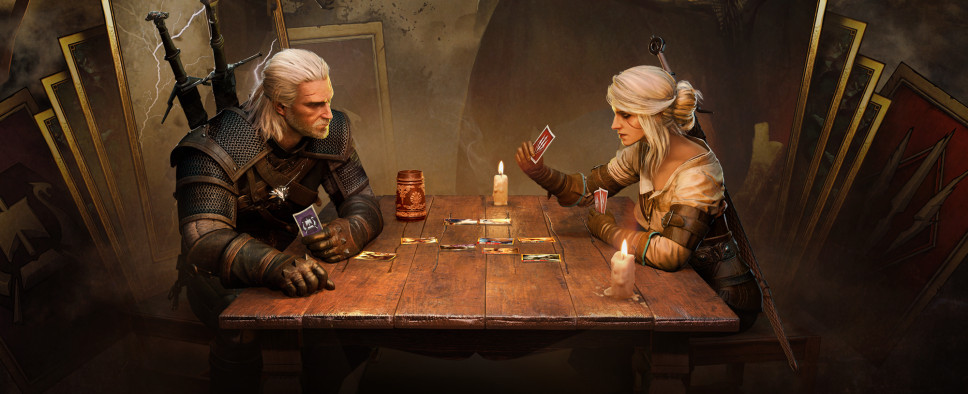GWENT: The Witcher Card Game Interview
-
Category: News ArchiveHits: 1047

With the Way of the Witcher expansion for GWENT: The Witcher Card Game set to go live on December 8, 2020, PC Gamer sat down with a number of developers working on CD Projekt's CCG. The resulting interview goes back to the game’s origins, highlights its journey from a mere minigame to a standalone project, notes its unique art style, and even briefly mentions the Netflix series.
Here are a few sample paragraphs:
The version Geralt played against shopkeepers, drawing a hand of 10 cards from his deck and laying them out over three rows, was kind of inert. Though some of those cards had abilities, like Scorch, Medic, Tight Bond, or the wildly overpowered Spy cards everyone built their decks around, many were just a number. And losing against someone because their cards had higher numbers than yours isn't a lot of fun.
That was far from the only issue. "The old Gwent had a lot of problems, and we wanted to fix them," says Ostrowski, who goes so far as to "maybe even call it a game with a rotten foundation." Thing is, the game was already in players' hands by the time many problems became obvious. It had been in open beta for almost a year when CD Projekt Red announced they were going to spend six months intensely retooling it before release, dubbing this process, and the resulting final version, "Homecoming".
[...]
All in all, Ostrowski estimates 80 or 90 percent of Gwent's cards were reworked by Homecoming. Artifact cards were added, the silver tier removed, and weather effects reduced. Meanwhile, the board lost its middle lane, and redraws—called mulligans in CCG jargon—were added between each round, rather than just at the start of the game, to reduce the influence of chance. "In original Gwent you didn't have this," Ostrowski explains. "It was 10 cards, you play with it. But as we were testing the game, I think it was the Nilfgaardian ability at some point, the faction ability. They had mulligans, and people were playing Nilfgaard a lot."
Now everyone could mulligan, and Nilfgaard fans have never quite got over it. In fact, a lot of players were frustrated by the sweeping changes implemented in Homecoming, and how different standalone Gwent was becoming from the version they'd played so much of in The Witcher 3.
"This was kind of terrifying," says Slama. "I think it's easy to underestimate how many big risks we took with this update, but I think they were really important things to build a stronger foundation. And while it was scary, and while I don't think we got off on the strongest foot and I can totally understand why people would be frustrated with what we launched at Homecoming, I think that we've worked really hard to show and achieve our original intent since then."

